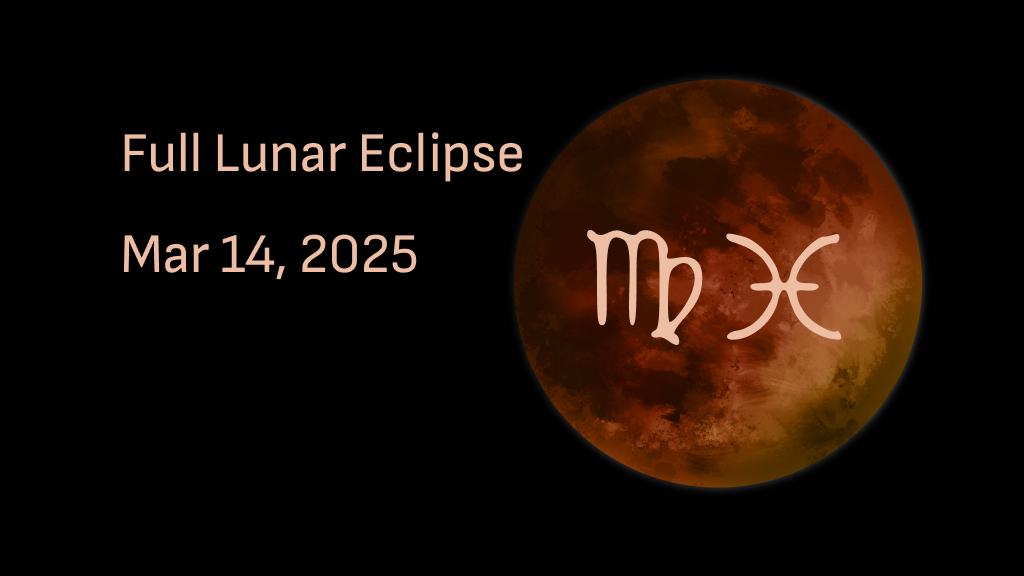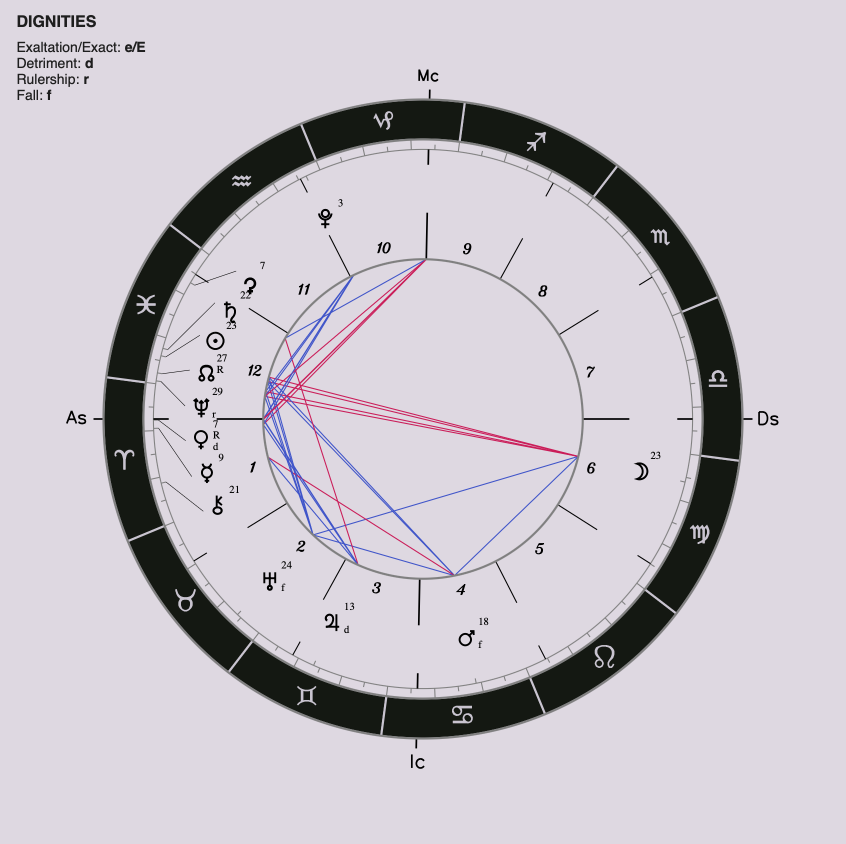Total Lunar Eclipse on March 14, 2025
February 06, 2025

A total lunar eclipse occurs at the descending node of the Moon's orbit on March 14, 2025, at 06:59 UTC, marked by a "Blood Moon.” Here’s everything you need to know about this enchanting event.
What is a Total Lunar Eclipse?
A total lunar eclipse occurs when the Moon passes through Earth's shadow (Umbra) during a Full Moon. This phenomenon happens when the Sun, Earth, and Moon align in a straight line, with the Moon located near one of its orbital nodes—either the North Lunar Node or the South Lunar Node. The March 14 lunar eclipse marks the beginning of the spring 2025 eclipse season.
On Friday, March 14, 2025, at 06:59 UTC, the Moon will align at the descending node of its orbit, creating a total lunar eclipse. During this alignment, Earth blocks direct sunlight from reaching the Moon, and the Moon takes on a reddish or copper hue, often referred to as a "Blood Moon.”
The reddish color is caused by sunlight scattering through Earth's atmosphere. As the atmosphere filters out blue light, the red spectrum illuminates the Moon’s surface. The intensity of the color depends on atmospheric conditions—more dust or cloud cover can create a deeper red hue.
This event will span about 6 hours and 3 minutes from start to finish, with the total phase lasting 1 hour and 5 minutes. Even during the darkest moments, the Moon emits faint infrared light due to the heat it retains on its surface.
Time and Visibility
Lunar eclipses, unlike solar eclipses, are completely safe to observe with the naked eye. The eclipse on March 14, 2025, will be visible in regions where the Moon is above the horizon at the time of the event.
According to NASA, this celestial event will be visible from regions including the Pacific Ocean, North America, Western Europe, and Western Africa.
Eclipses are most impactful in regions where they are fully visible, particularly during their central phases.
Key Eclipse Timings:
* 3:58 UTC: Moon enters Earth's penumbra
* 5:10 UTC: Partial eclipse begins as the Moon enters Earth's shadow
* 6:26 UTC: Total eclipse begins
* 6:59 UTC: Maximum eclipse
* 7:31 UTC: Total eclipse ends
* 8:48 UTC: Partial eclipse ends
* 10:00 UTC: Moon exits Earth's penumbra
Eclipse Characteristics
Astronomical Data:
This is the first eclipse of the season.
* Total Duration: 6 hours and 3 minutes
* Duration of Total Phase: 1 hour and 5 minutes
* Duration of Partial Phase: 3 hours and 39 minutes
* Umbra Magnitude: 1.1784
* Penumbra Magnitude: 2.2595
* Gamma: 0.3484
* Saros Series: 123
The eclipse on March 14, 2025 belongs to Saros Series 123 and is the 53rd eclipse in a total of 72 in the series. The eclipses in this series occur near the South Lunar Node, with the Moon gradually moving southward relative to the node.
According to astrologer Bernadette Brady's method, this eclipse belongs to Saros Series 9 North New.
Astrological Insights

Total lunar eclipse on March 14, 2025
March 14, 2025, at 06:59 UTC, 0°0'N, 0°0'E
The two weeks between the Lunar eclipse on March 14, 2025, and the Solar eclipse on March 29, 2025, are known as the “eclipse corridor”. This period often feels emotionally intense, serving as a powerful time for growth and transformation. These celestial events, in particular, invite us to release outdated patterns, heal emotional wounds, and make space for renewal and new beginnings.
Total lunar eclipse on March 14, 2025 occurs at 23°58' Virgo, directly opposing the Sun at 23°58' Pisces. It is the second in a series of seven eclipses along the Virgo-Pisces axis, which spans from September 2024 to February 2027.
This alignment highlights the need for balance between practicality (Virgo) and spirituality (Pisces). It encourages us to examine how these energies manifest in our lives and to address areas where we may need greater harmony.
Eclipse Impact in the Natal Chart
Total lunar eclipse on March 14, 2025 encourages harnessing intuition, imagination, and faith (Pisces) to maintain health and manage daily responsibilities (Virgo). It is a time to release outdated habits, ineffective routines, and unfulfilling behaviors to make way for renewal.
With its impact shaped by the placement of Virgo and Pisces in an individual’s natal chart, the eclipse inspires organization and self-improvement. At the same time, it reminds us to practice compassion and trust our intuition, balancing the analytical nature of Virgo with the spiritual wisdom of Pisces.
People with natal planets between 19° and 29° in mutable signs (Gemini, Virgo, Sagittarius, Pisces) may experience significant changes. The eclipse's effect depends on its placement in the natal chart. Aspects formed between an eclipse and natal or progressed planets describe the role planetary energies assume in the developmental process. These aspects indicate how these planetary energies contribute to personal growth and offer insights into the potential paths of development as the needs and interests linked to the eclipse unfold.
When is The Next Eclipse?
The March 14 lunar eclipse marks the beginning of the spring 2025 eclipse season. The next event will be a partial solar eclipse on March 29, 2025, followed by additional two eclipses later in the year.
Here are the dates for all four eclipses in 2025:
* Total Lunar Eclipse on March 14, 2025
* Partial Solar Eclipse on March 29, October 29
* Total Lunar Eclipse on September 7, 2025
* Partial Solar Eclipse on September 21